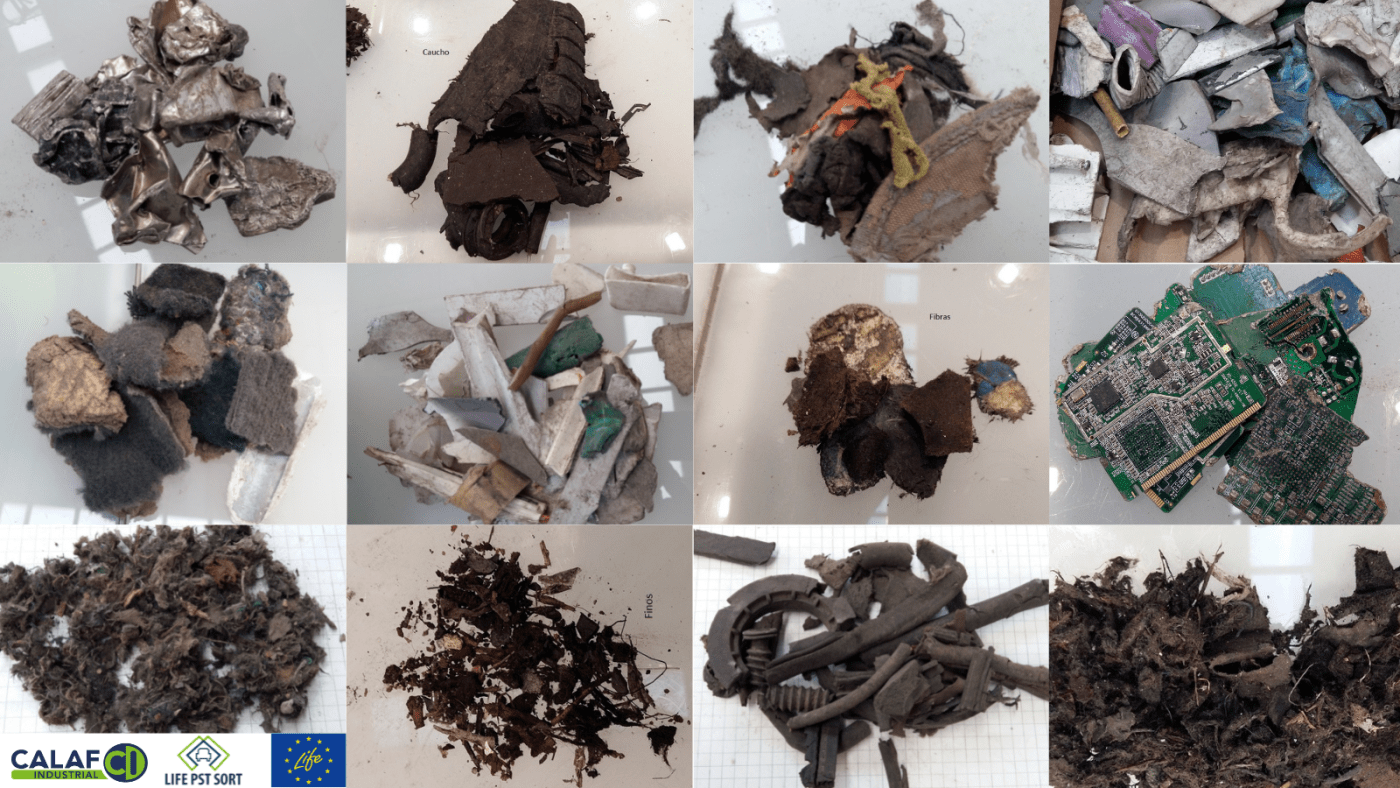
The LIFE PST SORT project has reached a demonstration stage of recovery of average 58% of shredded plastics from end-of-life vehicles (ELVs).
The technology used corresponds to machine vision supported by deep learning algorithms for the identification of a mixture of dark and colored plastics, without making use of X-ray and LIBS technologies. Cost-effective and environmentally friendly technology is therefore used, resulting in a plastic stream that can be further purified with the same technology or with other solutions available on the market.
Furthermore, the LIFE PST SORT project has also reach an 58% of average recovery of shredded plastics, also for metals, the recovery levels have reached 88% for ferrous metals and 87% for non-ferrous metals, including fractions between 15mm and 40mm of heavy and light fluff. In addition, flat waste such as glass is recovered at levels of 87%, while printed circuit board (PCB) scraps exceed 92% recovery.
The LIFE PST SORT project benefits from a grant provided by the LIFE program of the European Union (no. LIFE17-ENV/ES/000168), within a work schedule that started at the end of 2018 and will end in October 2021.
The technology used corresponds to machine vision supported by deep learning algorithms for the identification of a mixture of dark and colored plastics, without making use of X-ray and LIBS technologies. Cost-effective and environmentally friendly technology is therefore used, resulting in a plastic stream that can be further purified with the same technology or with other solutions available on the market.
Furthermore, the LIFE PST SORT project has also reach an 58% of average recovery of shredded plastics, also for metals, the recovery levels have reached 88% for ferrous metals and 87% for non-ferrous metals, including fractions between 15mm and 40mm of heavy and light fluff. In addition, flat waste such as glass is recovered at levels of 87%, while printed circuit board (PCB) scraps exceed 92% recovery.
The LIFE PST SORT project benefits from a grant provided by the LIFE program of the European Union (no. LIFE17-ENV/ES/000168), within a work schedule that started at the end of 2018 and will end in October 2021.


